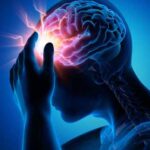Mixed Bipolar I Disorder is a severe mental health condition characterized by the simultaneous occurrence of manic and depressive symptoms. Unlike typical bipolar episodes, where mood states are distinct, individuals with mixed episodes experience a blend of high energy and agitation alongside feelings of sadness and hopelessness.

Symptoms of Mixed Bipolar I Disorder
People experiencing a mixed episode of Bipolar I Disorder may display the following symptoms:
Manic Symptoms:
- Increased energy levels
- Rapid speech and racing thoughts
- Impulsivity and risky behavior
- Decreased need for sleep
- Elevated or irritable mood
Depressive Symptoms:
- Persistent sadness or hopelessness
- Lack of interest in previously enjoyed activities
- Fatigue and low energy
- Suicidal thoughts or self-harm tendencies
- Difficulty concentrating
The coexistence of these symptoms creates a highly distressing state, increasing the risk of suicide and severe emotional instability.
Causes and Risk Factors
The exact cause of Mixed Bipolar I Disorder remains unknown, but several contributing factors have been identified:
Genetic Predisposition
Individuals with a family history of bipolar disorder are at a higher risk of developing the condition.
Neurochemical Imbalance
Irregularities in neurotransmitters such as dopamine, serotonin, and norepinephrine play a crucial role in mood regulation.
Environmental Triggers
- High levels of stress
- Substance abuse
- Traumatic experiences
- Sleep disturbances
Diagnosis of Mixed Bipolar I Disorder
A mental health professional conducts a comprehensive assessment to diagnose this condition. Key diagnostic steps include:
- Clinical Interview: A psychiatrist evaluates symptoms, medical history, and family background.
- Mood Charts: Tracking mood patterns over weeks or months helps in identifying mixed episodes.
- Psychiatric Evaluation: Tools like the DSM-5 (Diagnostic and Statistical Manual of Mental Disorders) criteria guide the diagnosis.
- Differential Diagnosis: Conditions such as schizoaffective disorder, major depressive disorder, and ADHD must be ruled out.
Treatment Options for Mixed Bipolar I Disorder
Medication
- Mood Stabilizers: Lithium and valproate help regulate mood swings.
- Atypical Antipsychotics: Olanzapine, risperidone, and quetiapine manage mixed episodes effectively.
- Antidepressants (Caution Required): Often used in combination with mood stabilizers to avoid triggering mania.
Psychotherapy
- Cognitive Behavioral Therapy (CBT): Helps individuals identify negative thought patterns and develop coping strategies.
- Dialectical Behavior Therapy (DBT): Improves emotional regulation and distress tolerance.
- Psychoeducation: Educating patients and families about the disorder enhances treatment adherence.
Lifestyle and Coping Strategies
- Maintaining a structured sleep schedule
- Engaging in regular physical activity
- Practicing mindfulness and stress reduction techniques
- Avoiding alcohol and recreational drugs
- Building a strong support system
Complications and Prognosis
Without proper treatment, mixed episodes can lead to severe consequences such as:
- Increased risk of self-harm and suicide
- Social and occupational impairment
- Substance abuse issues
- Frequent hospitalizations
With early diagnosis and comprehensive treatment, individuals with Mixed Bipolar I Disorder can lead fulfilling lives. Long-term management involves medication adherence, therapy, and lifestyle modifications.
Mixed Bipolar I Disorder is a complex and challenging mental health condition that requires an integrated approach for effective management. A combination of medication, therapy, and lifestyle modifications significantly improves prognosis. Early intervention and consistent treatment remain key in reducing the severity and impact of mixed episodes.

